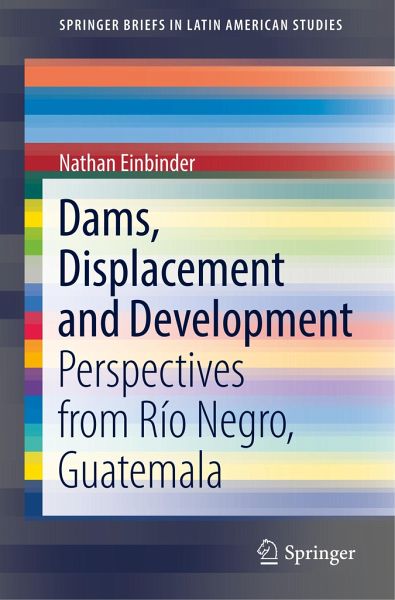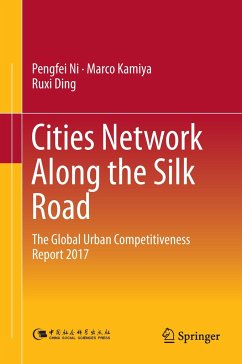
Dams, Displacement and Development
Perspectives from Río Negro, Guatemala

PAYBACK Punkte
19 °P sammeln!
Using the case of the Chixoy Hydroelectric Dam in Guatemala, constructed between 1978 and 1983, this book examines the effects of displacement on the former residents of Río Negro, a community forcibly evicted and nearly eliminated by the military and paramilitary. Using open-ended interview discussions and testimonies, it focuses on this specific incident of displacement and violence and discusses the outcomes 30 years later. Guatemala's history is plagued by development projects that resulted in displacement, violence, and increased marginalization of its indigenous and non-indigenous popul...
Using the case of the Chixoy Hydroelectric Dam in Guatemala, constructed between 1978 and 1983, this book examines the effects of displacement on the former residents of Río Negro, a community forcibly evicted and nearly eliminated by the military and paramilitary. Using open-ended interview discussions and testimonies, it focuses on this specific incident of displacement and violence and discusses the outcomes 30 years later. Guatemala's history is plagued by development projects that resulted in displacement, violence, and increased marginalization of its indigenous and non-indigenous populations. In order to make way for development initiatives such as the production of bananas, African palm, coffee and sugar cane; the extraction of metals such as gold and nickel; or, in this specific case, the construction of a hydroelectric dam, the land-based, predominately Maya campesinos have been systematically uprooted from the lands of their birth and launched into uncertainty.
Theresearch findings presented, based on fieldwork conducted from January to April 2009, suggest that the majority of survivors from the massacres that took place are still adversely affected by the destruction of their families and livelihoods. While the circumstances pertaining to this event are unique, similar struggles over land and human rights continue into the present - and if policies remain unchanged, in both international development agencies as well as the Guatemalan government, clashes of this nature only increase in time.
Theresearch findings presented, based on fieldwork conducted from January to April 2009, suggest that the majority of survivors from the massacres that took place are still adversely affected by the destruction of their families and livelihoods. While the circumstances pertaining to this event are unique, similar struggles over land and human rights continue into the present - and if policies remain unchanged, in both international development agencies as well as the Guatemalan government, clashes of this nature only increase in time.












